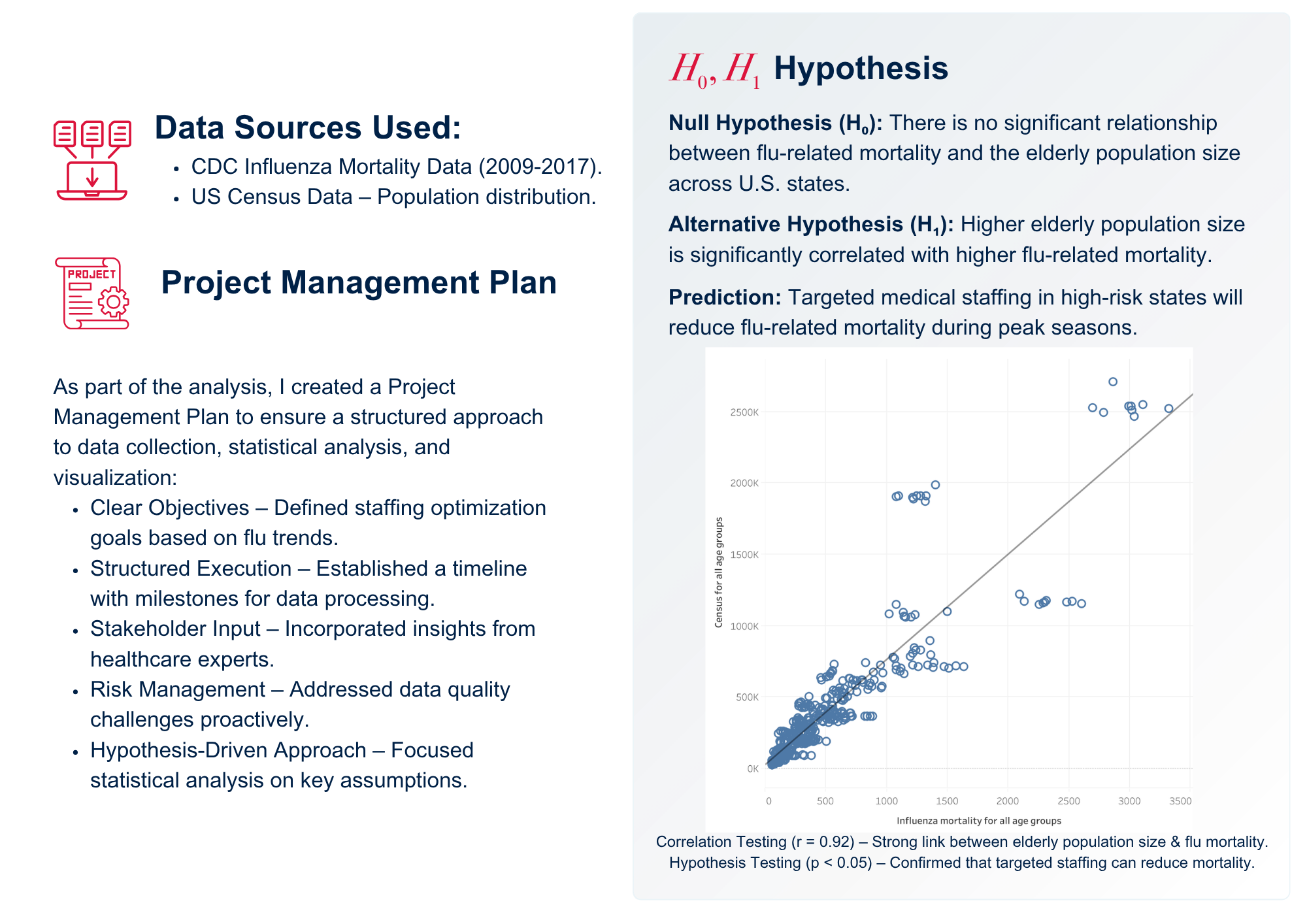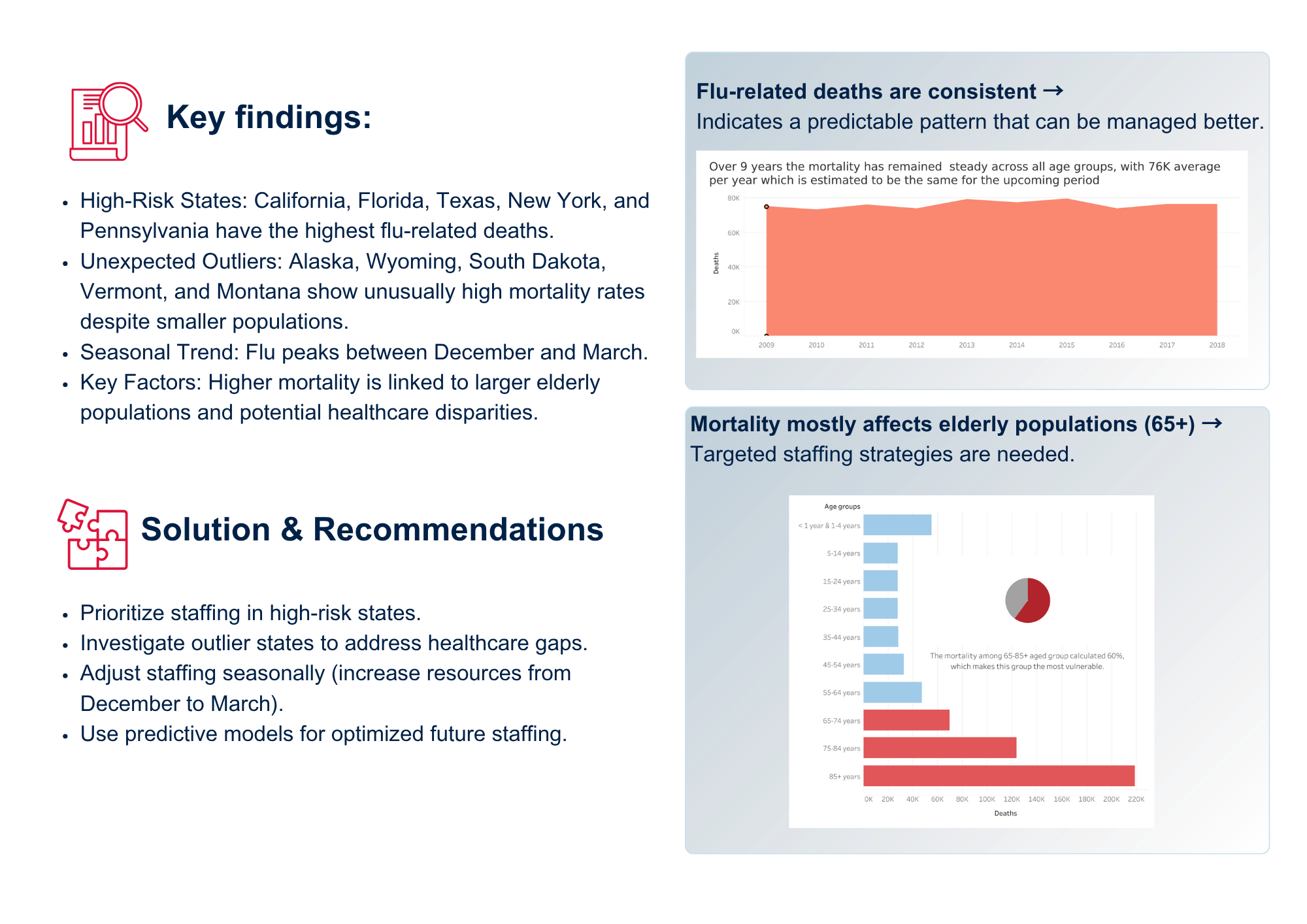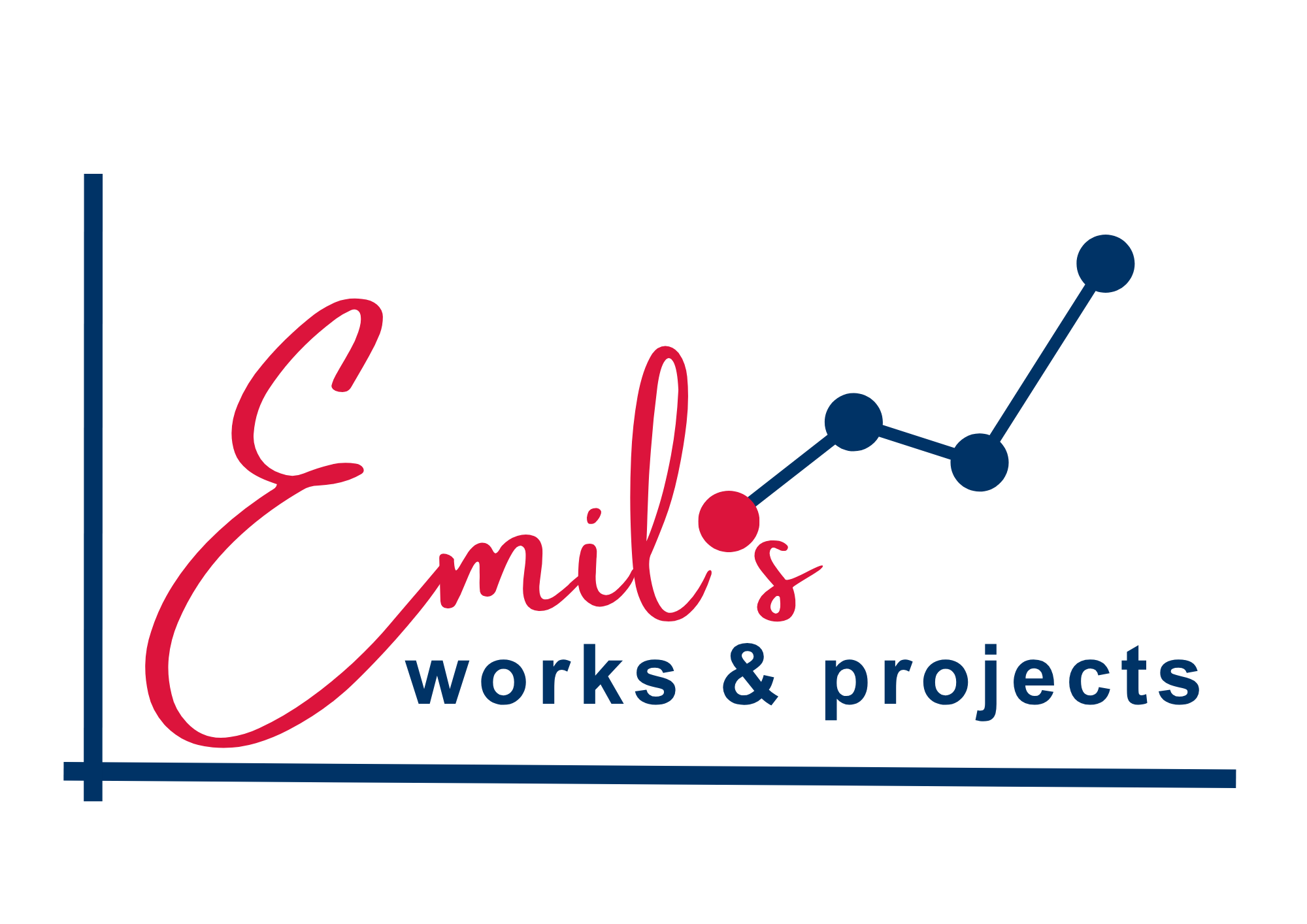Optimizing Medical Staffing During Influenza Season
A Data-Driven Approach to Reducing Flu-Related Mortality
Problem Overview:
This project aims to develop a data-driven strategy for a medical staffing agency to deploy temporary healthcare workers effectively during influenza season in the United States. The goal is to reduce flu-related mortality rates by identifying high-risk states and peak flu months and ensuring that hospitals have adequate staffing resources.
Objectives
I completed this project as part of a Data Analytics Bootcamp to simulate a real-world healthcare scenario, to demonstrate how data analytics drove better resource allocation in public health.
As a Data Analyst, my role included:
- Preprocessing CDC influenza mortality and US Census data for accuracy.
- Conducting statistical analysis & hypothesis testing to validate trends.
- Creating visualizations (charts, heatmaps, spatial analyses) to identify patterns.
- Providing insights for optimized medical staffing allocation.
Problem Statement: Optimizing Staffing for Flu Season
Hospitals and medical staffing agencies face significant challenges in handling the surge in patient demand during flu season, particularly among elderly populations (65+), who are most vulnerable to severe flu complications.
- Inconsistent Staffing Needs – The seasonal nature of influenza outbreaks leads to fluctuating demand for healthcare workers, but staffing models often fail to adjust dynamically.
- Overburdened Healthcare Systems – With 76K flu-related deaths annually, hospitals risk staff shortages, leading to increased patient wait times and lower quality of care.
- Resource Misallocation – Many hospitals overstaff in low-impact periods and understaff during peak flu months, resulting in inefficiencies in workforce management.
Research & Planning
The implementation plan consists of four stages:
- Data Collection & Cleaning – Gathered CDC mortality & census data, ensuring data integrity.
- Data Analysis & Visualization – Identified high-risk states & peak flu months using heatmaps & statistical models.
- Predictive Modeling – Trained forecast models to simulate staffing scenarios.
- Implementation & Monitoring – Partnered with hospitals to pilot data-driven staffing strategies and refine models.


Key Lessons Learned
- Data Quality Matters – Clean data ensures reliable insights.
- Visualization Strengthens Communication – Charts & dashboards make complex findings clear & actionable.
- Statistical Analysis is Crucial – Hypothesis testing validates decision-making.
- Storytelling with Data Drives Impact – Clear presentation is as important as the analysis itself.
Final Thoughts
This project highlighted how data analytics can drive healthcare solutions by optimizing medical staffing, reducing flu-related mortality, and improving resource allocation. The findings showcased technical expertise in statistical analysis & predictive modeling while demonstrating the real-world impact of data-driven decision-making.
See Tableau dashboard
